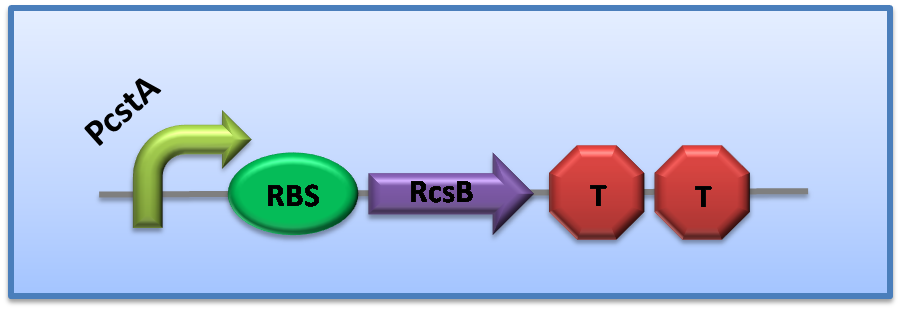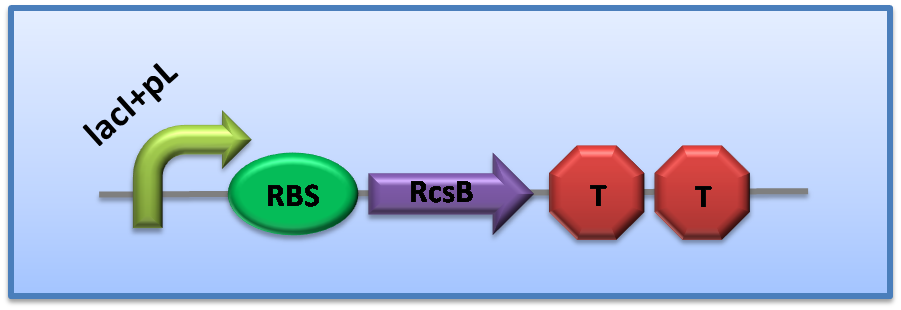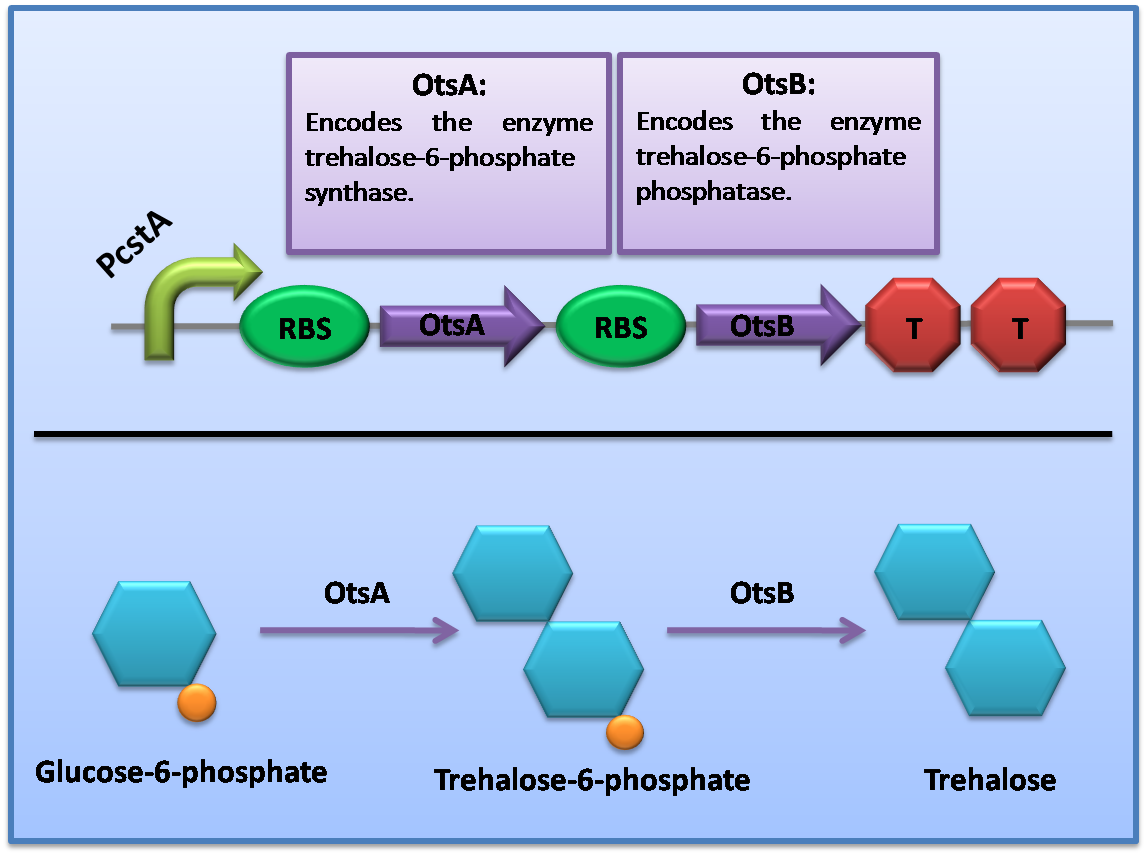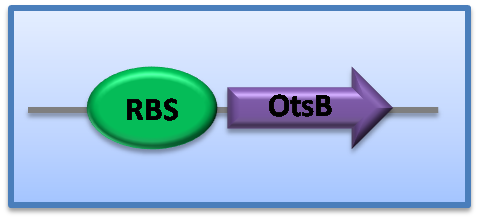Team:Imperial College London/M2
From 2009.igem.org

Contents |
 Module 2 - Encapsulsation
Module 2 - Encapsulsation
Module 2 protects our chassis against the rigours of stomach acid and freeze drying. This is achieved by the synthesis of the exopolysaccharide colanic acid and the cryoprotectant trehalose.
Initiation:
Module 2 is triggered by a rise in levels of cyclic Adenosine Mono Phosphate (cAMP). This is because cAMP facilitates the dimerisation of the transcription factor CRP which induces transcription downstream of the PcstA promoter. The rise in cAMP is correlated with a fall in levels of the primary carbon source (glucose). Thus, by controlling the initial amount of glucose present in the system, we achieve a timer function for the start of Module 2.
Acid Resistance Theory:
By 'hacking' E.coli’s endogenous acid resistance pathways in three places we induced the formation of a safe colanic acid microcapsule that protects against the harsh acidic conditions of the stomach. Without encapsulation, our polypeptides would be denatured and degraded by stomach acid and digestive proteases respectively.
 About induced acid resistance.
About induced acid resistance.
The Encapsulation Triple Hack:
Acid Resistance Results:
To characterise colanic acid encapsulation, we assembled the following testing constructs:
Freeze Drying Theory:
Freeze drying is the process by which a material is preserved via its dehydration at a very low temperature. Freeze drying our chassis would slow the decomposition of the polypeptide of interest and prevent the growth of any contaminants. Unfortunatly, freeze drying can seriously damage cell membranes and denature the internal polypeptides. To prevent this from occuring we have decided to upregulate the biosynthesis of the cryoprotectant trehalose. The genes OtsA and OtsB are required for trehalose production.
 About freeze drying & trehalose biosynthesis.
About freeze drying & trehalose biosynthesis.
Freeze Drying Results:
To characterise the protective effect of trehalose against freeze drying, we assembled the following testing constructs:
Unfortunatly, we did not have time to ligate together both OtsA and OtsB and were therefore unable to do any functional assays.
Finale:
The end of Module 2 occurs when the temperature of the culture is raised to 42 degrees centigrade. This temperature shift triggers the initiation of Module 3 in which the genome is deleted.
Project Tour


Module 2 Contents





 "
"










